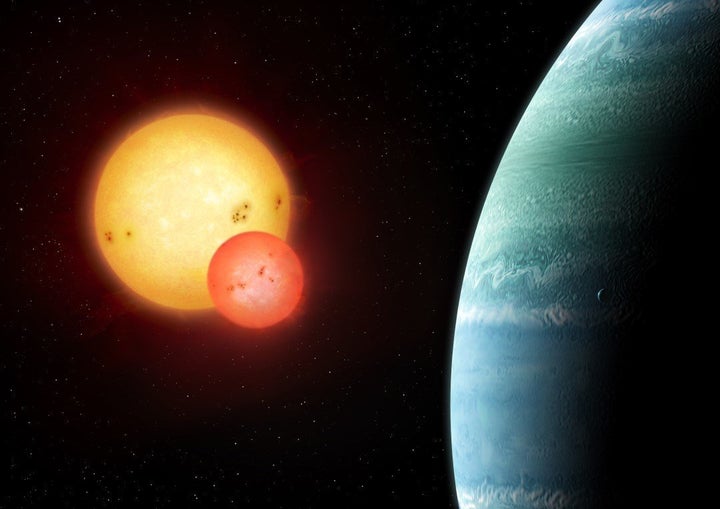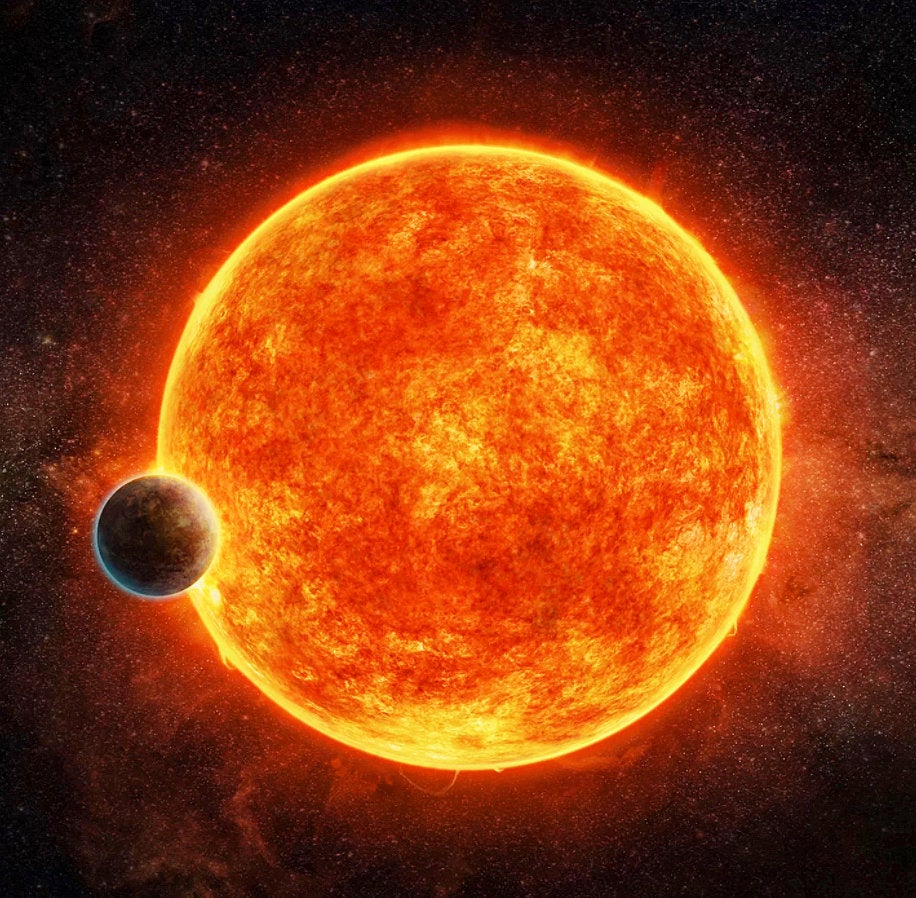To the delight of "Star Wars" fans, a team of astronomers has spotted yet another "Tatooine."
Much like the iconic desert planet from the movies, Kepler-453b is circumbinary, meaning it circles not one, but two separate stars.
(Picture a young Luke Skywalker gazing out at a double sunset.)

Nader Haghighipour, an astronomer at the University of Hawaii and a member of the discovery team, told The Huffington Post that this particular finding suggests that more Tatooine-type planets are out there just waiting to be discovered.
"For me, it’s personal," he said. "For 20 years, I’ve been saying these things exist, and now we are discovering them."
Due to its erratic orbit -- caused by the gravitational pull of two stars -- Kepler-453 is visible to astronomers only 9 percent of the time. Had researchers not detected the planet when they did, their next chance to do so would have been 2066.
"It's amazing how fortunate we were in catching it at the right time," Stephen Kane, an assistant professor of physics and astronomy at San Francisco State University and member of the team that made the discovery, said in a statement. "It's a good reminder that there's always a value in checking again."

Artist's impression of the Kepler-453 system showing the newly discovered planet on the right and the eclipsing binary stars on the left.
A recent study showed that it's just as easy for an Earth-like planet to form around a binary star as it is to form around a single star like our sun. While Kepler-453b is located within its host stars' "habitable zone," the area where life could potentially exist, its size (it is 60 percent larger than Neptune) makes it unlikely it supports life.
Its moons, however, could be a different story.
According to Haghighipour, the orbit of Kepler-453b will remain stable for tens of millions of years, increasing the possibility of life forming on its moons.
While the planet takes 240 days to orbit its pair of stars, the stars themselves orbit each other every 27 days. The larger of the two is similar to Earth's sun, while the smaller star contains only 20 percent as much mass and is far cooler, according to a release.

In this acrylic painting, Dr. Ben Bromley, an astrophysicist at the University of Utah, illustrates the view of a double sunset from an uninhabited Earth-like planet orbiting a pair of stars.
NASA's Kepler Mission first detected a circumbinary planet, Kepler-16b, in 2011; Kepler-453b is the 10th such discovery. Haghighipour said astronomers have found these planets are common in our galaxy and can come in a wide range of sizes and configurations.
"And we have more," Haghighipour told HuffPost. "We have more we are going to announce."
The Kepler-453 system resides in the direction of the constellation Lyra and is estimated to be 1 to 2 billion years old. It is approximately 1,400 lights years from Earth.
The team of astronomers, led by William Welsh, a professor at San Diego State University, will officially announce the discovery of Kepler-453b at the International Astronomical Union meeting Friday in Honolulu.

